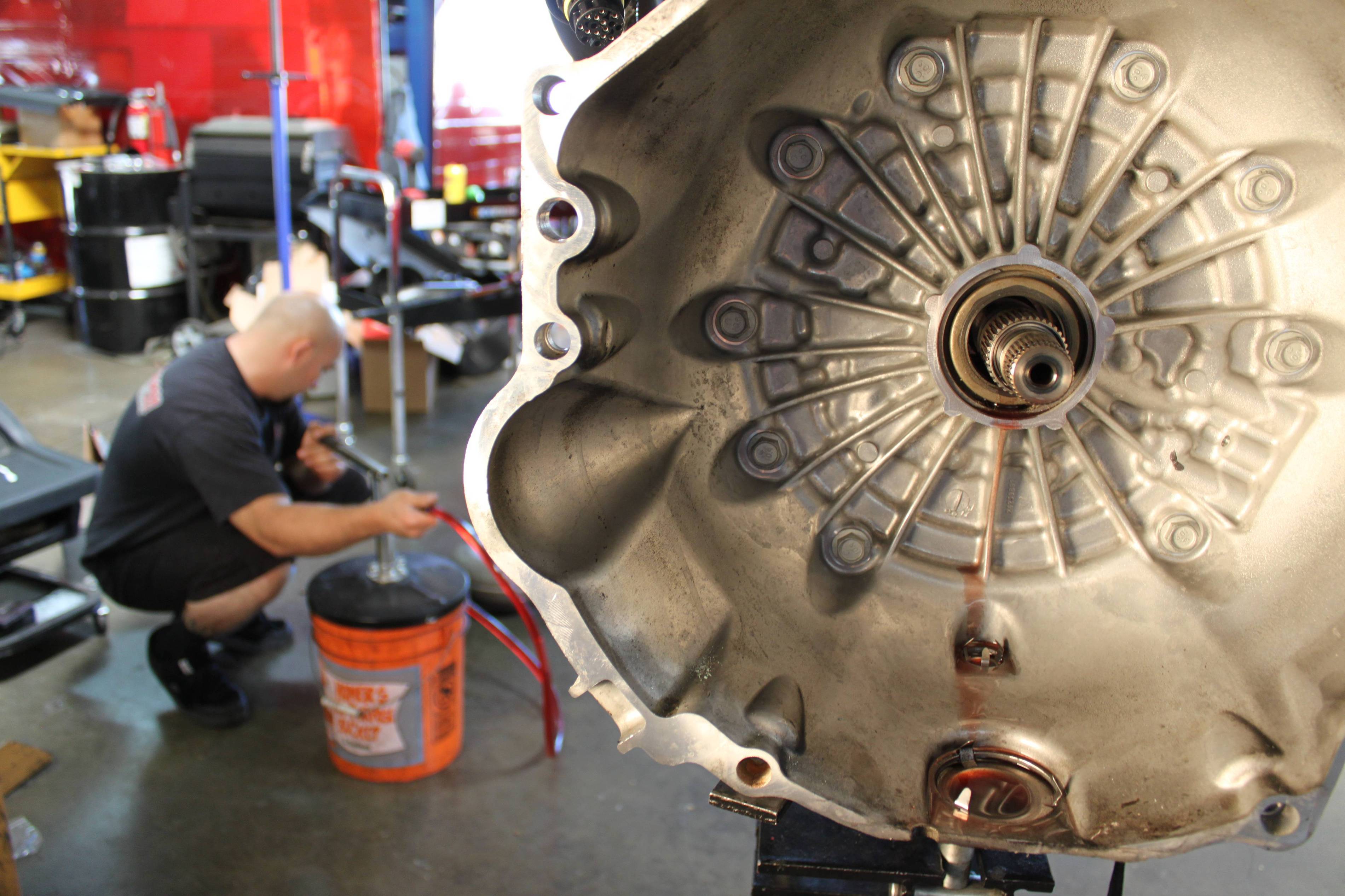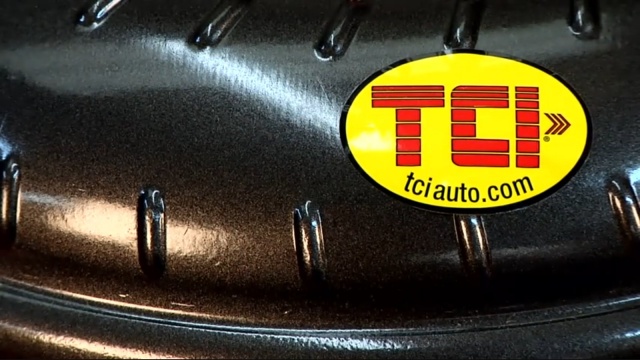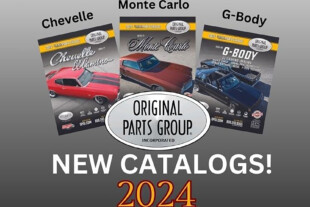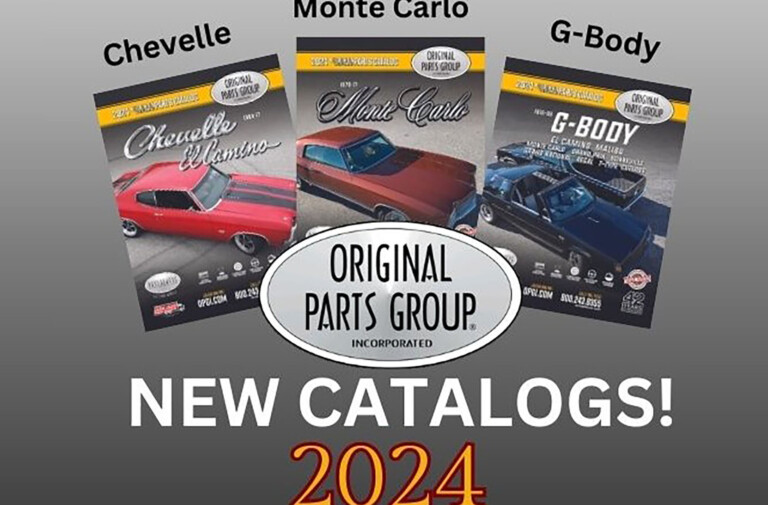As illogical as it might sound, if you have a performance car equipped with an automatic transmission one of the best ways to make it faster actually has nothing to do with adding any more power to the engine. Whether you want to be competitive at the drag strip, or just get the most out of your bolt-ons – one of the best things you can do for your automatic car is swap in a performance torque converter. But, torque converters are anything but a one-size-fits all modification. You need a torque converter that fits your car, your engine, and how you drive it.
Just What Is A Torque Converter?
The first step to figuring out what torque converter is right for you is understanding just what a torque converter really is, and how it operates. This short video from the experts at TCI lays out all the info, but basically a torque converter is a “fluid coupling” that has two halves, that can spin at different rates, allowing the engine to spin freely at idle or when you come to a stop. One half of the torque converter is bolted to the flexplate of the engine, this is known as the “turbine”.
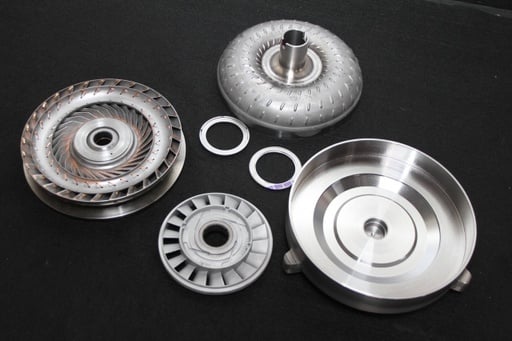
Torque converters come from the factory welded up, so its pretty hard to get a look inside and see what makes them tick. From the right counter-clockwise, you can see the cover (which bolts to the flexplate), the impeller pump (which slides over the transmission input shaft) the turbine, and the stator.
The other half is connected to the input shaft of the transmission, known as the “pump”. On the inside of the torque converter there is also the “stator”, which is essentially the brain of the torque converter, as it changes the directional flow and redirects the force of the fluid as it moves through the torque converter, which ultimately results in a more efficient transfer of torque through the transmission.
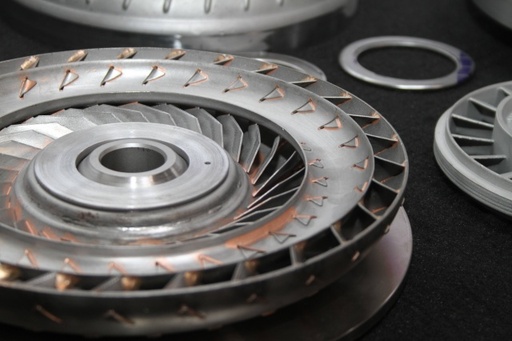
The fins inside the torque converter are like two fans blowing against each other (only with fluid instead of air). Eventually one fan will blow harder and over power the other fan, making it spin in the same direction.
The turbine side of the converter that is bolted to the flex plate will always spin at the same speed as the engine, while the pump side will slip to a certain point and let the engine keep turning, while you come to a stop. Once the engine reaches a certain RPM, the fluid will be moving fast enough through the torque converter that the two sides will begin to couple and the car will start to move forward. The point that the car begins to move is known as the “stall speed.”
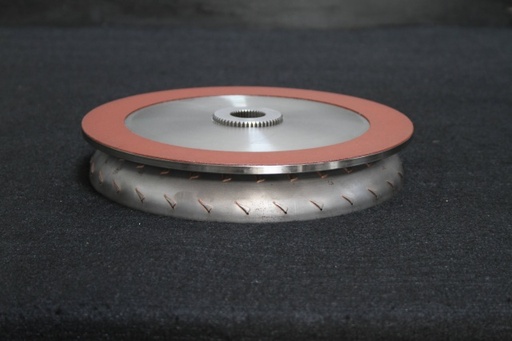
The pinkish friction surface you see here is the torque converter’s lock up clutch on the back of the turbine. If your converter is a lock up unit (many actually aren’t), at a certain RPM in top gear the torque converter will lock up thanks to this friction surface, and the torque converter can no longer slip. This is a good thing because now all of the engine’s power will get transmitted through the transmission and none will be wasted, helping with gas mileage and drivibility.
Quit Your Stallin’ And Get Movin’
Torque Converters are all about the stall…you want your torque converter to stall at the RPM where your engine has its peak torque output, giving you the hardest launch possible.
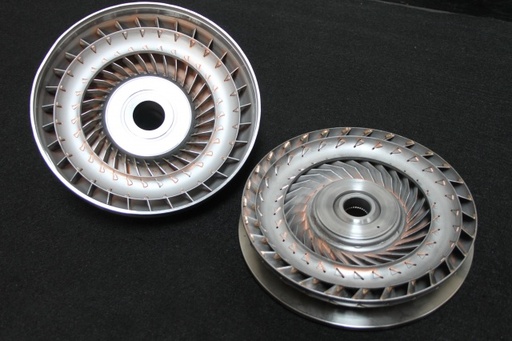
Changing the size, shape, and number of fins inside a torque converter will affect what RPM it will stall at.
If you think about it, the internal dynamics of the converter are going to be very different when the output side is being held motionless compared to when it starts to rotate, so a converter manufacturer can tailor both foot brake and flash stall speeds to get the most out of a car without overwhelming the available traction. Ideally, you want a converter that stalls at an RPM that lets the car leave as hard as possible without breaking traction, then flashes up to a speed where the engine is getting into the fat part of the power curve.
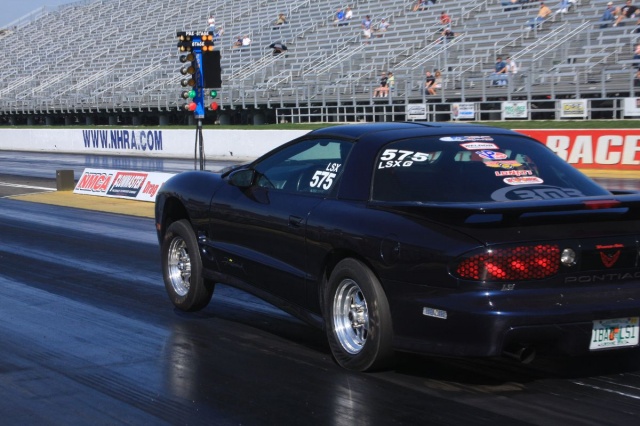
If you can get your torque converter to stall at the same RPM that your engine is making its peak torque, you’ll be able to maximize your launch.
A turbo car might need a converter that’s a little “looser” in true stall speed, for instance, to let it get up on boost as you foot brake stall, but tighter in flash stall to get the car rolling off the line before the power from the turbo really hits. Nitrous cars on the other hand are an example where the engine may not be making very much torque at all sitting there on the trans brake, compared to how hard it hits when the first stage of nitrous comes on.
Picking the Right Torque Converter for Your Car
Sidebar title
The pro’s at TCI Automotive were kind enough to walk us through the factors that will determine what kind of torque converter a specific car will need. Ironically, most of those factors have little or nothing to do with the transmission itself. They are…
- Your rear end gear ratio
- How tall your tires are
- How heavy your car is
- How big your engine is
- How high you plan to rev it
- The specs of your cam
- Whether or not you are going to use boost or nitrous
So how do you pick the correct torque converter for your car? Easy; you ask a professional. We went to the guys at TCI Automotive, who have been making high performance torque converters for some of the most brutal drag cars around for over 40 years. It’s safe to say they know a thing or two about torque converters.
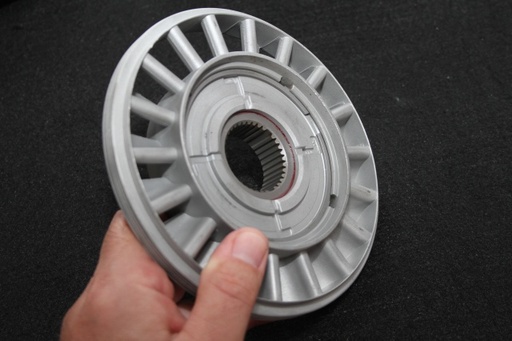
The stator is the brains of this operation. TCI tells us, “The stator changes fluid flow between the turbine and the pump, which is what makes a torque converter a ‘torque multiplier’, and not just a fluid coupling.”
Scott Miller, Product Manager at TCI tells us, “We like for folks to call us and say ‘Hey, this is what I think I need, but I want to make sure.’ We want to get you the right converter the first time so you can stay a happy camper.”
Simple enough, right? One call and you’re done. But, we know you’re a hot-rodder, and “because I said so” isn’t going to cut it for you. You, no doubt, want to understand why a torque converter is right or wrong for your car. So we asked Miller to give us a rundown of the specific factors that TCI takes into account when recommending a torque converter for a specific car. Miller says, “There are really about seven major factors you need to take into consideration when you are trying to find the right torque converter for your car.”
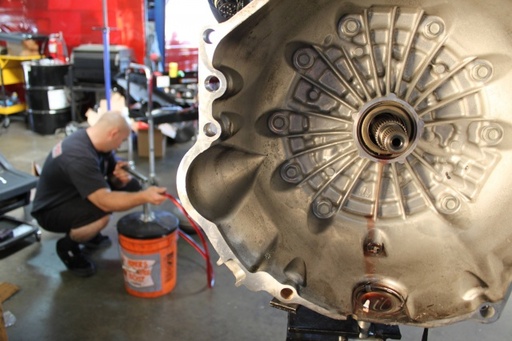
Although its not a terribly complicated job, swapping out torque converters isn’t the type of job you want to have to do two or three times to get right.
Rear Gear Ratio
The first thing you’ll need to consider when looking for a torque converter is what rear gears you are running or plan to run. Miller says, “The gear ratio in your rear end determines how much load you are putting against the converter. A 4.30 rear gear isn’t going to put as much load against a converter in your average 3,000 pound car as a 3.23 because it is harder to get the car going with the 3.23’s. You have to give it a lot more throttle and you’re effectively putting a lot more load against the converter.” He adds, “With a 4.11 or 4.56, you can go with a higher stall because the torque converter isn’t going to slip as much when it’s not locked up. Also, gears that tall don’t put as much load against the torque converter as a 3.23.”
Rear Tire Size
The overall height of your rear tires can have a big effect on what kind of flash stall you need in your car. Miller tells us, “Taller tires can actually affect the converter’s flash stall. The taller the tire is the more revolutions of the driveshaft it will take to turn it, so a tall tire effectively makes the car behave like it has high gears in it. A shorter tire will take fewer revolutions to turn, so it can make the car seem like it has lower gears. The effect on the torque converter’s flash stall once the car starts moving is the same as if you actually swapped rear gears.”
Overall Weight of the Car
Even the weight of your car will have an effect on what kind of converter you need. “Again, it has to do with how much load you are putting on the converter.” said Miller. “A heavier car is going to put quite a bit more load on a converter than an light-weight, stripped down track car.”
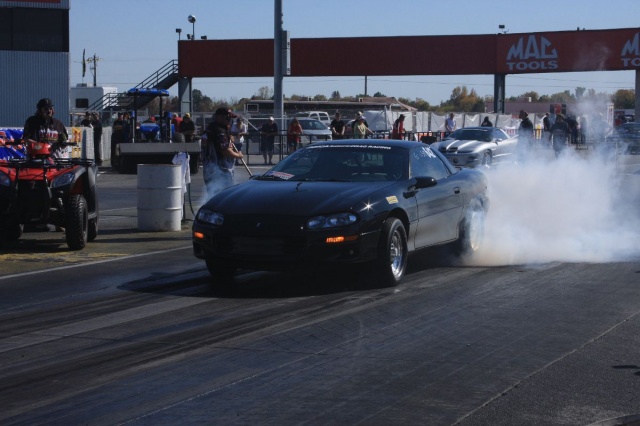
The weight of your car will load down the torque converter as soon as you mash the gas. A light weight car designed for track duty won’t put as much load on the converter as a full weight street car, so if you used the same converter in both cars, the drag car would make the converter flash stall higher because of less load.
Engine’s Cam Specs: Lift, Duration and Centerline
Since the cam you are running will have a drastic effect on how your engine behaves, you have to take it into account as well. “You really need to pay attention to your cam specs when picking a torque converter for two reasons.” explained Miller. “First, the bigger your cam is the higher the RPM your engine will idle at. Secondly, the cam you have will play a big part in what your engine’s powerband looks like. If a stock motor starts making power at 2,000 RPM, then you put an aftermarket cam in it with more duration, you will move your powerband up into the 3,500 RPM range or even higher. So you need to have a converter that is set up to stall at an even higher RPM to match the engine’s new powerband with the new cam.”
Cubic Inches of Your Engine
Miller says, “The bigger your engine is, the more torque it will typically make. And the more torque the engine has, the higher the RPM’s it will push the converter.” This means that a torque converter designed to stall at 3,500 RPM with a mild small block might stall might stall at 4,000 RPM behind a fire-breathing LSX454R with 720 pound feet of torque.
Power Adders or Naturally Aspirated
Once again, the more torque your engine makes, the higher your torque converter will stall. Miller explains, “If you’ve got a power adder like a supercharger, turbo, or nitrous you’ll be making a lot more power, and in turn push your converter’s stall speed even higher. Even each one of these power adders will work best at different stall speeds, so it’s important to know exactly what you are planning to run on your engine.”
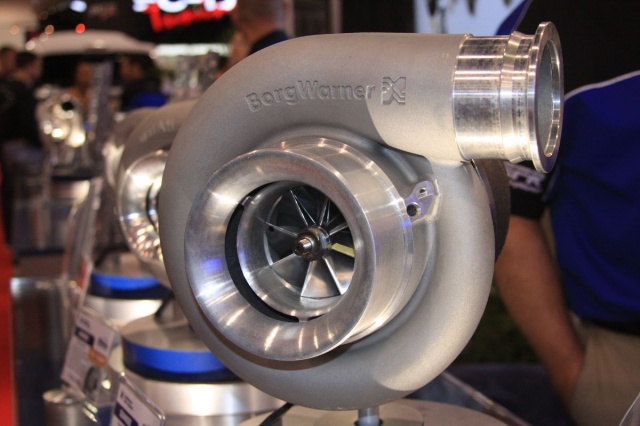
A big turbo might not have much to do with your transmission, other than trying to scatter it to bits, but it will have an effect in determining the optimal stall speed for your torque converter.
Operating RPM Range of the Engine
Without a doubt, the most valuable tool you can have when trying to find the right torque converter is a dyno graph of your engine that shows what RPM your engine is making its peak torque. “If you know where your engine is making its peak torque, then you know exactly what you are aiming for, and you’ll be more likely to get it right once you factor in everything else like your rear gear ratio and the weight of the car.” Miller explains.
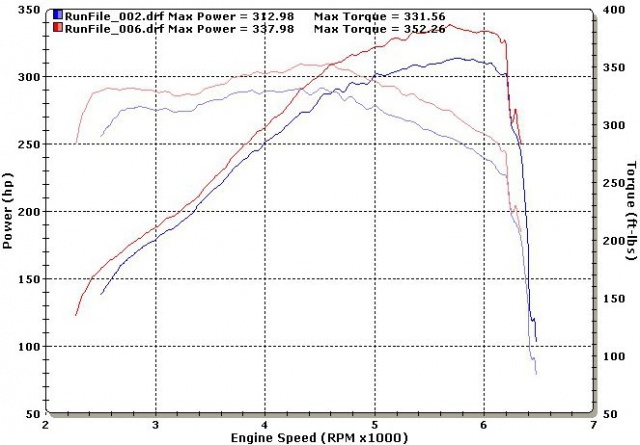
Knowing at exactly what RPM your engine is making peak torque will help you know what RPM range you need to target for your stall speed. But, once you factor in everything else (weight, rear gears, tire height, power adders) you might find that you need to move the stall speed up or down.
Final Thoughts
Getting the right torque converter for your car isn’t difficult and really boils down to two simple steps. First just gather the specifics on your car, like weight, gear ratio, and your engine’s powerband. Second, give the experts at a top converter company a call. If you follow these steps, you can go forth, armed with all the necessary info to score yourself the right torque converter after just one simple call to the experts. You’ll spend less time installing and experimenting with torque converter combos, and more time enjoying your car.


